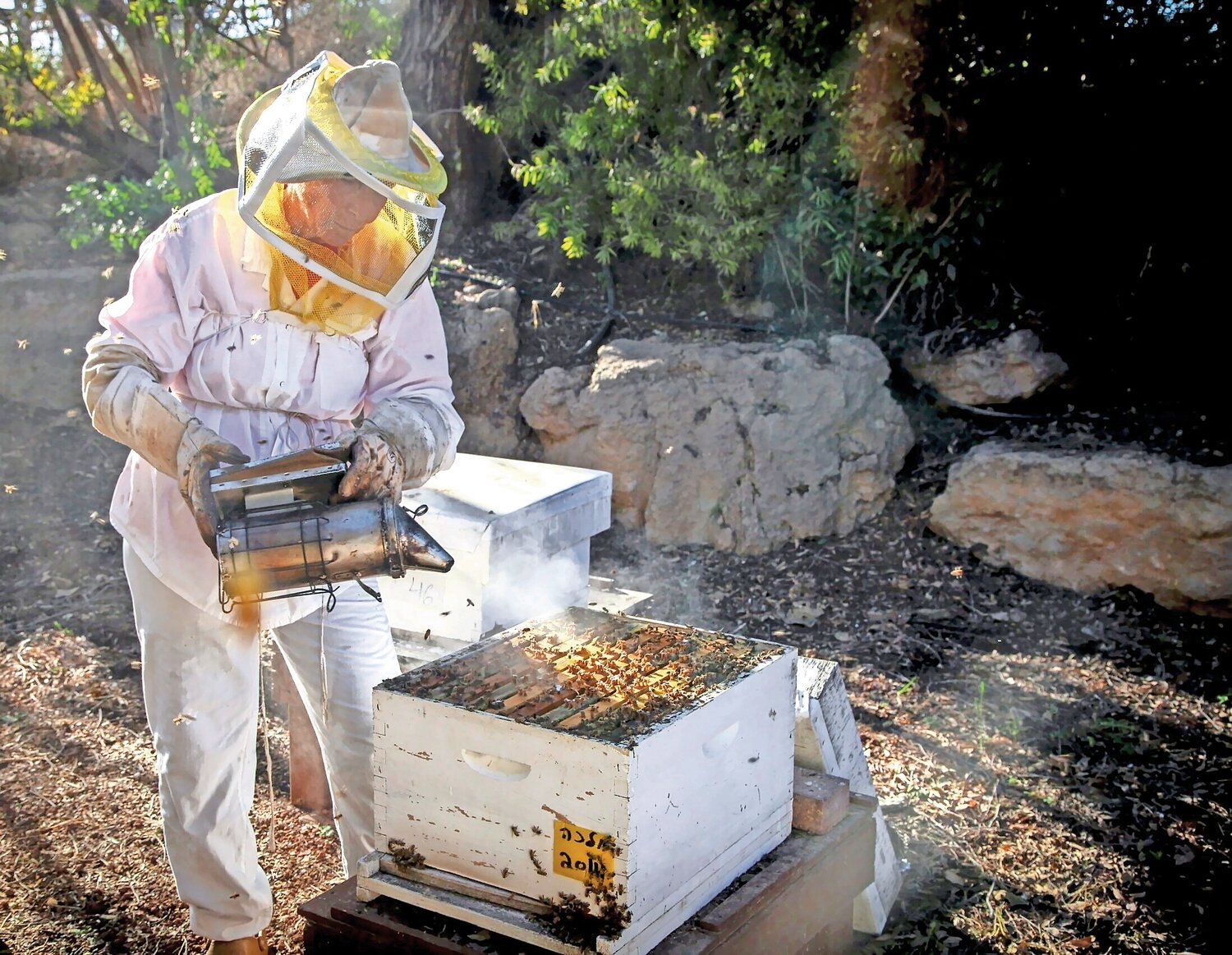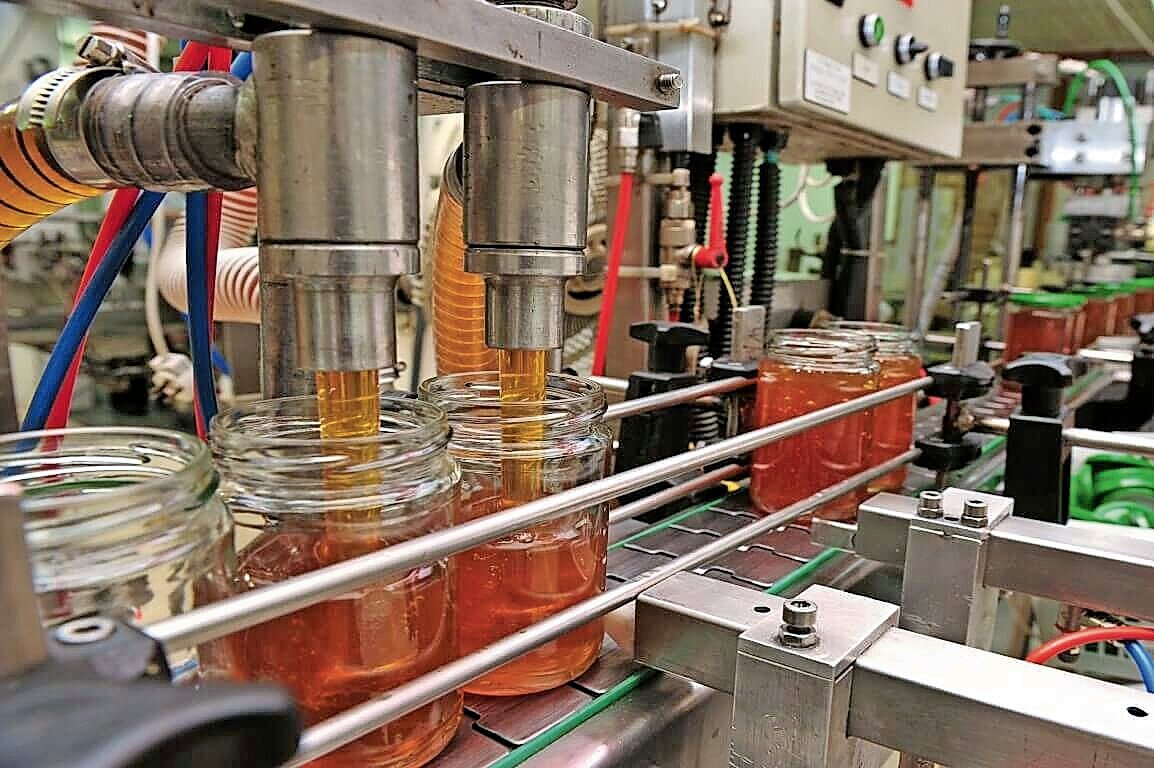Israeli honey now made of ‘blood, sweat and tears’
Israeli honey may look like any other, but this year it’s made of “blood, sweat and tears,” according to Yair Schwartz of the Jewish state’s largest honey-making business, in Kibbutz Yad Mordechai near the Gaza border.
Affected disproportionately by the fighting since Oct. 7, beekeepers and honey producers have worked intensively, sometimes risking their lives, to preserve their already vulnerable industry.
“You can make and mix honey anywhere, but this is our place and it was clear to us that we needed to return,” said Oriana Tabul, manager of Yad Mordechai’s honey factory, which has 40 employees and whose establishment in 1936 predated that of Israel by 12 years.
Honey-making has symbolic significance in Israel, where it is one of just a few important products that are produced almost entirely locally. Honey is also emblematic of the beauty and plenty of the Land of Israel, and in Torah, G-d and others describe it as “a land flowing with milk and honey.”
“Returning to make Israeli produce is part of our revival, part of the rehabilitation,” said Ido Dvir, another honey maker from Yad Mordechai.
Stocks needed to be replenished ahead of Rosh Hashana. Israelis consume about 40% of their annual honey intake in the month of Tishrei, according to the Israel’s Honey Council.
Yad Mordechai’s honey makers had other practical reasons for reopening the factory as soon as possible: Farmers in the heavily agricultural Tekuma Region, near Gaza, depend on beehives for crop pollination.
“We’re honey producers but honey is almost a byproduct of what we do,” said Schwarz, referencing pollination.
Avocado groves with beehives produce twice and sometimes three times more fruit than without hives, he noted.
“So we’re the cornerstone for the rehabilitation of the whole region,” where much of Israel’s tomatoes, potatoes, cucumbers, leafy greens and bananas are grown, he said.
On Oct. 7, Yad Mordechai, which is less than two miles from Gaza, was among the 20 towns and locales that Hamas terrorists attacked after crossing the border.
The local security team kept the terrorists who targeted Yad Mordechai out, preventing the sort of mass murder and atrocities committed elsewhere near the border, where Hamas men murdered some 1,200 people and abducted another 251.
No one from the kibbutz was hurt, but the apiary and honey factory shut down for the first time in decades amid heavy rocket fire. They remained closed for about a month.
Israeli tanks, often maneuvering at night, ran over some of Yad Mordechai’s 4,000-odd hives. Foreign workers fled Israel in the weeks following the massacre, leaving honey makers understaffed. Often, hives were in areas that the IDF declared off limits for civilians due to rocket and sniper fire from Gaza.
A few honey keepers “risked their lives and went out to their hives in such territories anyway,” said Schwartz. “They are so attached to the bees that they risked their lives to make sure the colonies didn’t die.”
Kibbutz Yad Mordechai was evacuated once before in 1948, after its fighters and Palmach reinforcements fended off for days a vastly superior Egyptian army force. It was reconquered and resettled months after the evacuation, and it became a national symbol for endurance and revival. After its second evacuation last year, it was among the first border-adjacent locales to return en masse.
“We beekeepers thought we had it tough before Oct. 7. Then we found out how tough tough can get,” said Boaz Kanot in Moshav Avigdor, about 15 miles northeast of Yad Mordechai.
As the fighting spread from the Gaza area to Israel’s north, Hezbollah’s rocket fire from Lebanon has also complicated honey production in the Galilee, Kanot said.
“It was an added difficulty on top of preexisting ones,” he said.
He was referencing the challenges and setbacks faced by beekeepers in Israel and all over the world due to declining bee populations, new diseases and the negative effects of urbanization on apiculture. In addition to that, there’s also the issue of fake honey, often produced in China and marketed falsely as made in the European Union, Kanot said.
Neither those longstanding issues nor the war-related complications will deal a death blow to Israel’s honey-making industry, said Kanot.
“We are here to stay, we are driven by a sense of mission and aided by the best technology, much of it developed here in Israel,” he said. The setbacks, he added, “only mean more hard work. But that’s something none of us has ever shied away from, or we wouldn’t be in this business in the first place.”









